Tillandsia gutteana
Click thumbnails for full size, scaled to a new window.
Tillandsia gutteana
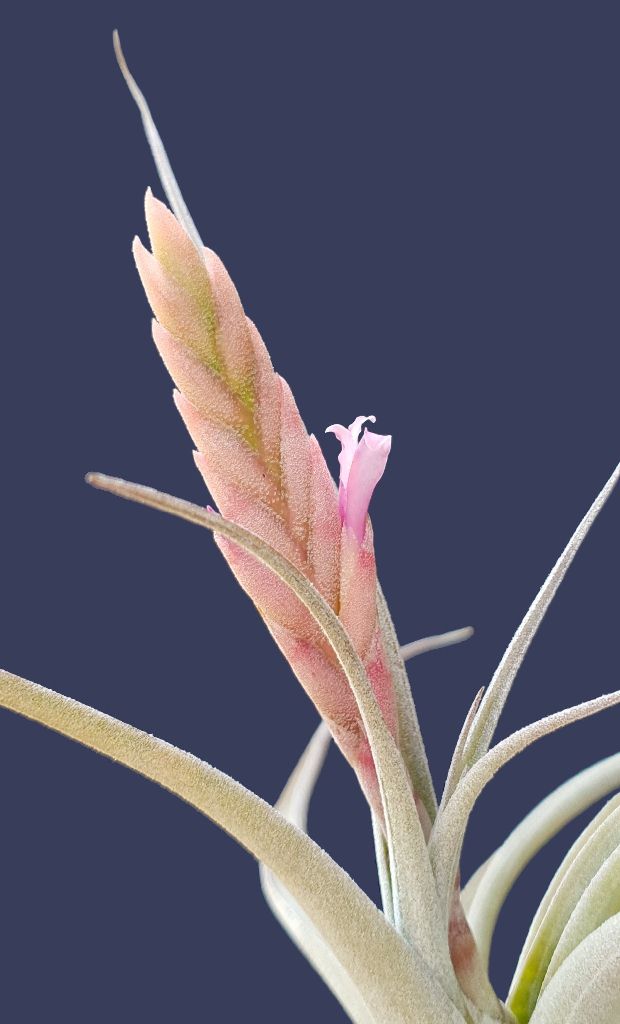
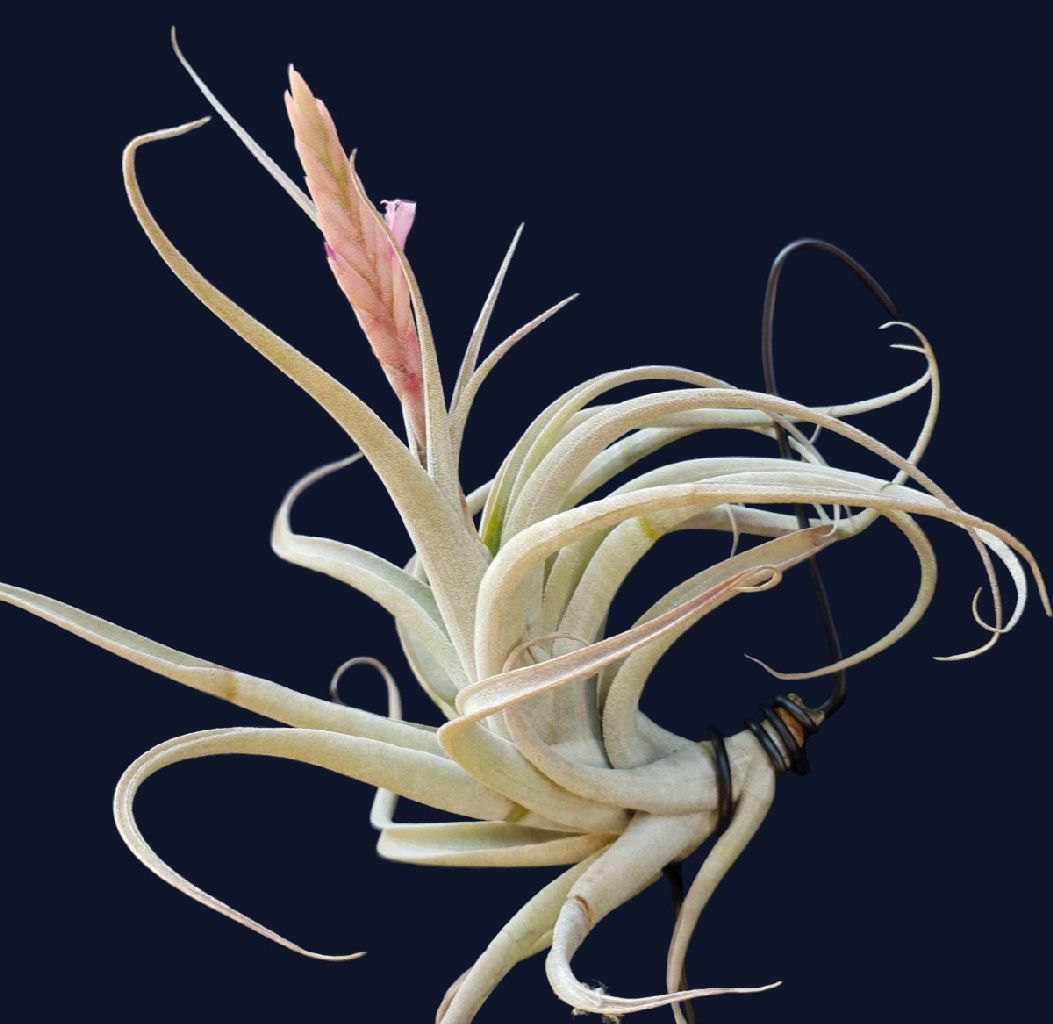
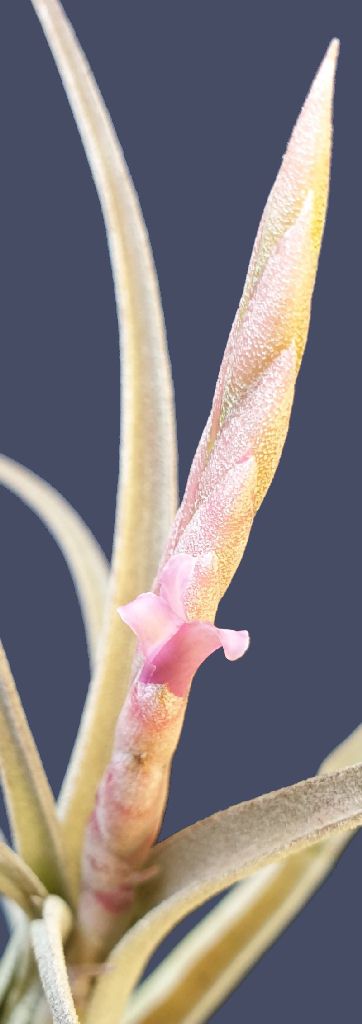
Chris Larson ... "1 April 2020. It is a special day. 31 years ago, in a week or so, I spotted this plant growing off the rocks at Cumbemayo - just up the hill from Cajamarca in northern Peru. Many collectors have been there and have seen them growing on the rocks. This is a plant ex-Lotte, as on that trip I only collected seed (and sent it back to Brent) because I was away for a year or so.
It pays to keep old info on tags after plants are synonymised, because for some time this one was lumped in with T. macbrideana var major. (Usually I'd change the label, and put the old name on the back.) I'm not sure for how long it has been so, but this is now considered a species in its own right.
Anyway, those who have seen it will know how cold the wind is up at Cumbemayo, at around 3500m alt., you'll understand why it likes Melbourne."
Mark Supple ... "Lovely plant Chris but not one for here in Newcastle with our summers getting hotter."
Peter Tristram ... "Fantastic! During the 2003 Peru trip, when a trio of Nutters went to Cumbe Mayo, some were collected from limestone bluffs in farmland away from the reserve. Some survived and I actually bloomed one before mine slowly died. I Remember sending Derek pics of it. I doubt if the others have any survivors now but you never know. It was certainly cold up there and climbing was a slow business."
Derek Butcher ... "Yes Peter, I have a photo from you. Reading enclosed (below) for those who may be interested."
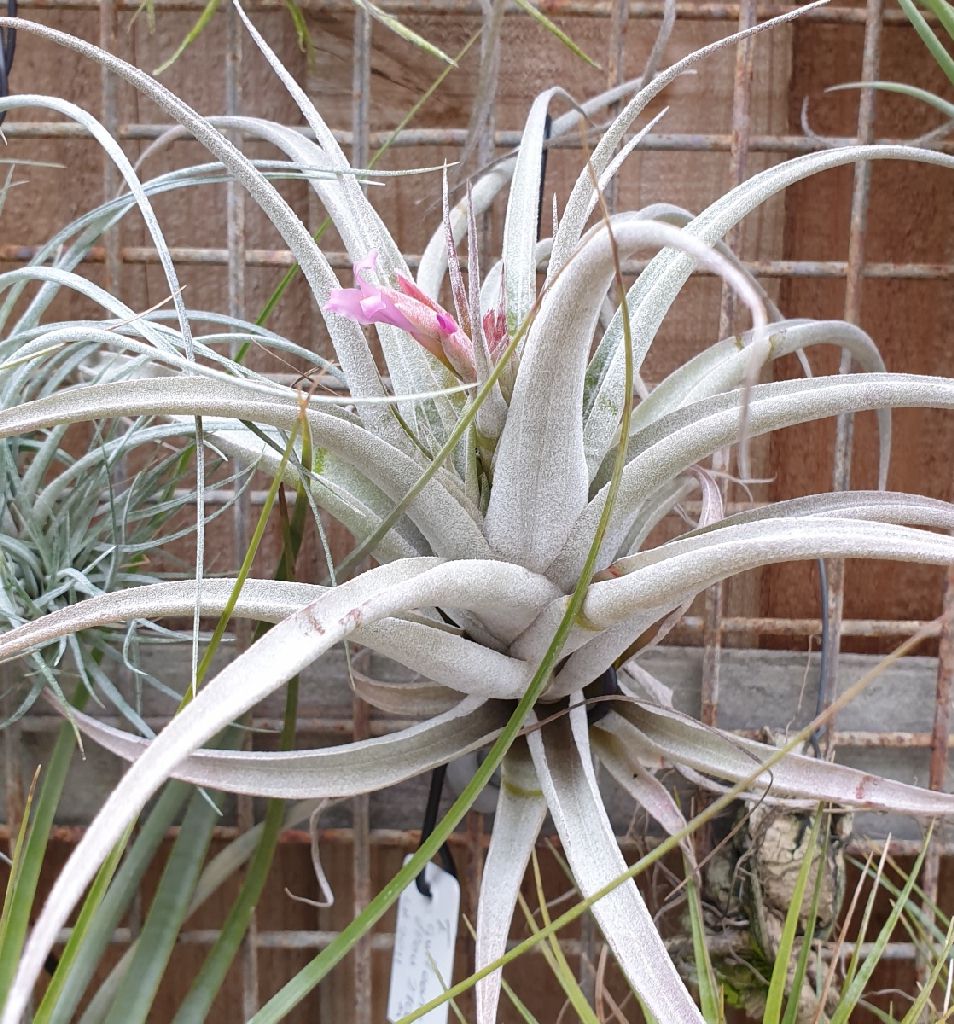 _ _ _ _ _
_ _ _ _ _
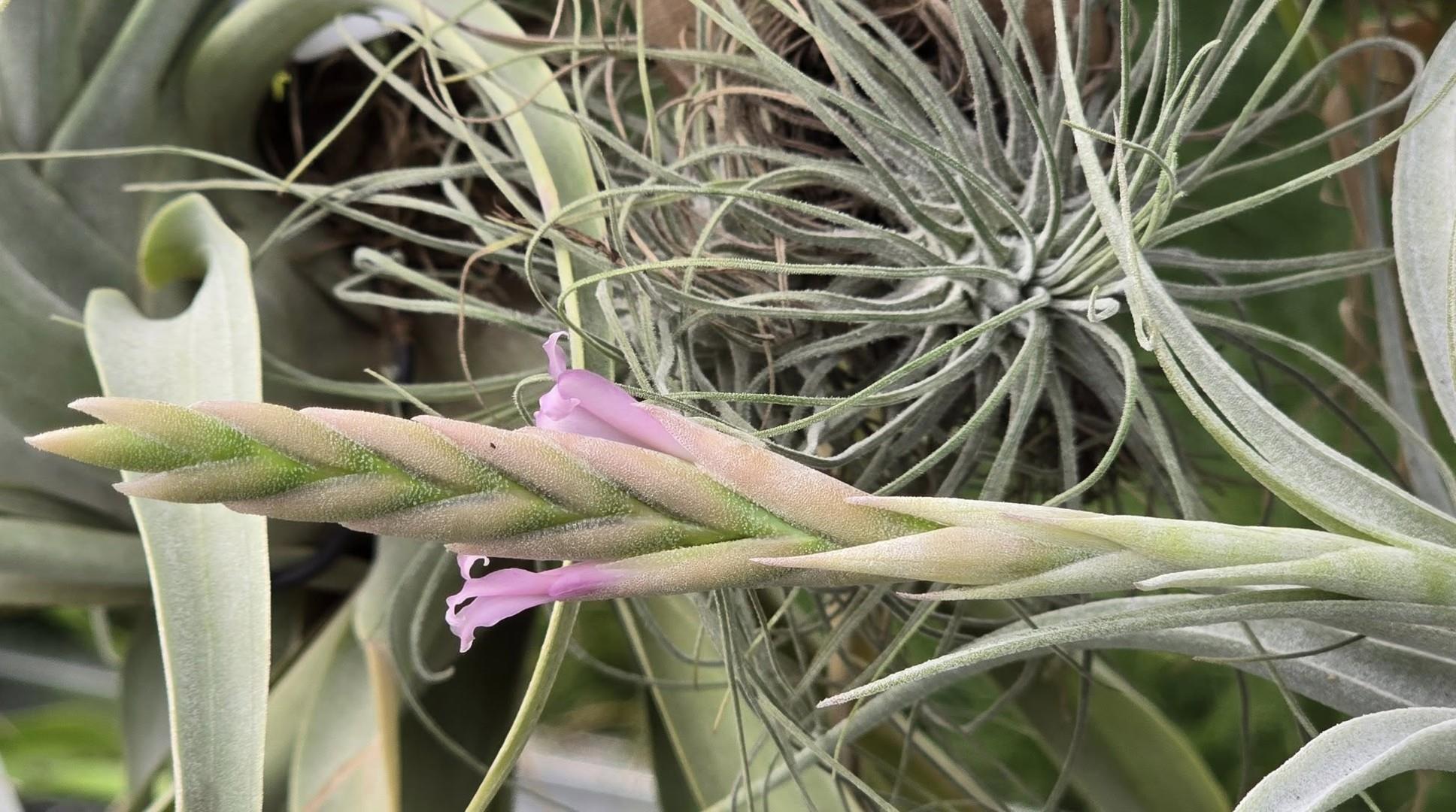
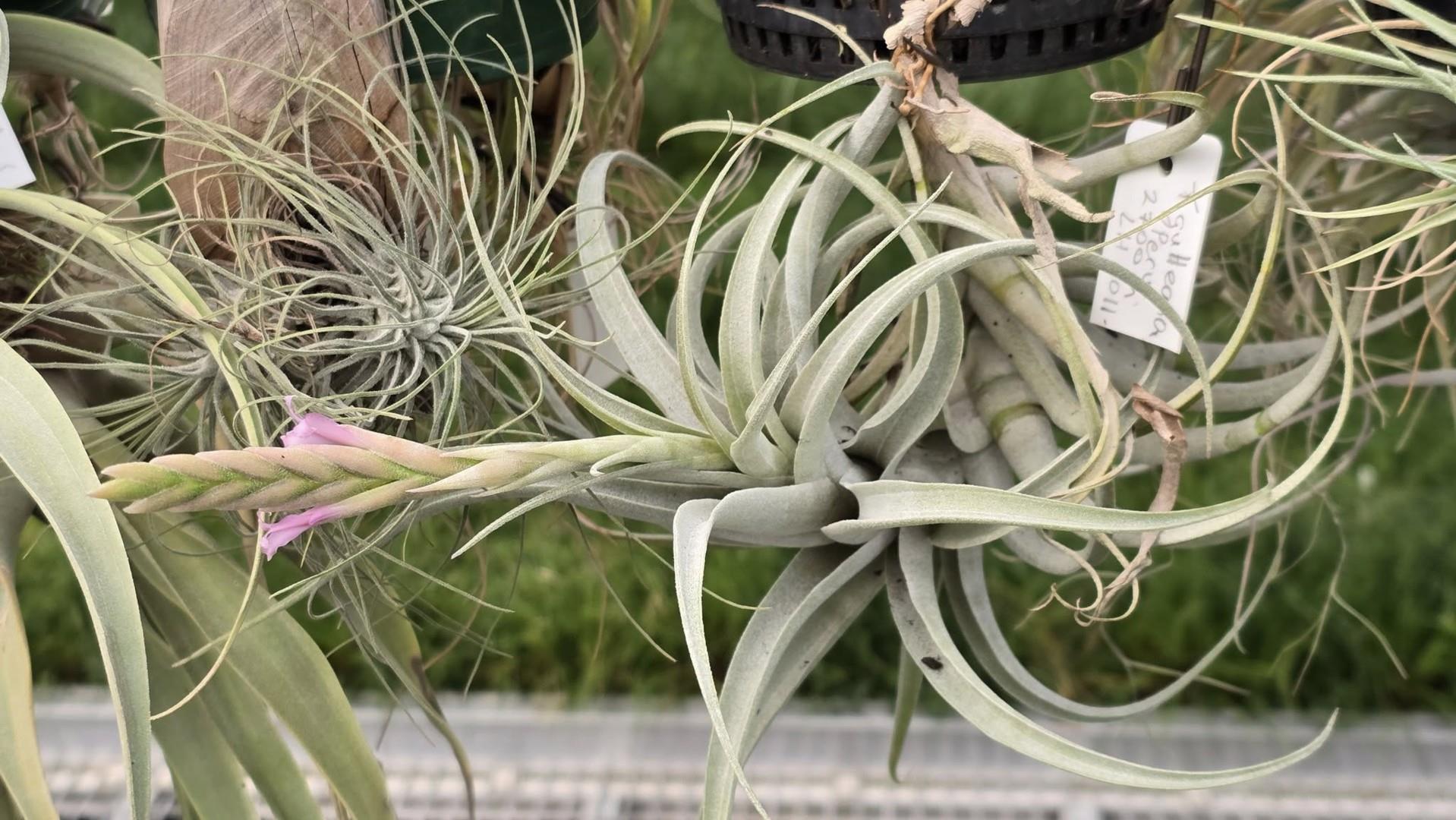
| Chris Larson 08/20 |
Peter Tristram 04/25 |
Chris Larson ... "T. gutteana ex LF 2700m alt. A nice llittle relative of T. macbrideana."
Dale Dixon ... "Very nice. It looks so different to the one of this species that you posted in April this year."
Chris Larson ... "Yes Dale, a different import. I've been expecting the spike to come up further. As this is the first flowering, I am not sure if it supposed to - though it does look odd ... like it is an aberration. Still the flower is certainly in that grouping (with macbrideana). I haven't keyed it to look."
Alfonso Trudu ... "Will this lovely plant be able to survive in Queensland with its hot and humid summers? Does Peter have one at Repton?"
Peter Tristram (08/20) ... "Most of my 2500m+ species succumbed to the endless hot humid summers these last few years. Thankfully Chris has extras of nearly all. T. gutteana, collected near Cumbe Mayo in 2003 and purchased from Lotte a few times, never makes it, so I left them for Chris where the climate suits better. Some parts of SEQ have been considerably cooler than my area too, with the influence of the trade winds. Further south just stewed for weeks on end. Good luck!"
Peter Tristram (04/25) ... "T. gutteana in full glory in the Larson collection. Another from the Hromadniks, imported back in the good old days. Chris and I have both visited its habitat, well over 3000m at Cumbe Mayo above Cajamarca in northern Peru. It suits a cooler, climate, and under cover."
Tillandsia gutteana by Butcher see also Die Bromelie 1/1997
I have been waiting since 1991 when Kiff produced his book “A Distributional Check-list of the Genus Tillandsia” for some Botanist to amend the description for Tillandsia macbrideana var. major Rauh to accommodate T. gutteana. It now appears I can be waiting forever because it seems that it is accepted practise to do this without giving reasons. As a non-botanist I believe this is un-scientific. I now know why it has been said “Botany is more an art than a science” Let us look at the facts.
In the BSI Journal 1983 pages 151-155 Weber described T. gutteana and said it differed from T. macbrideana L.B. Smith by its acaule habit, an inflorescence shorter than the leaves and the lepidote posterior much-higher-connate sepals. These differences check out when you refer to Smith and Downs page 810 and fig. 252 B-D. However, the whole of the sepal detail is missing in Weber’s description and you need to refer to his drawing for this information! I do not have access to Feddes Repertorium Vol 94 to check the Latin description but in a personal communication in Dec. 1996 Dr. Walter Till confirmed that the sepals are lepidote and connate for more than one half.
Let us now refer to Bromelienstudien XVII 1985 by Werner Rauh. To help me understand his varieties of T. macbrideana and his then new species T. pseudomacbrideana I designed a Key which is as follows;
Tillandsia macbrideana complex
1. Plant - long stemmed ==> 2
- short stemmed ==> 4
2. Leaf - dark violet, narrowly attenuate, scape not visible, spike simple to 5cm long, to 10 flowered, mostly bent sideways, flower bracts pink ==> var. atroviolacea
- grey/white, scape not visible ==> 3
3. Leaf - 3 - 4cm long; Spike to 4cm long, 5 - 10 flowered, rhachis exposed ==> var. macbrideana
- 10cm long. Spike to 7cm long, 15 flowered ==> var. major
4. Scape - Not visible, leaves to 10cm long, erect, stiff, spike to 15cm long, rhachis not visible, floral bracts dark-carmine ==> var. longispica
- visible ==> 5
5. Sepals - glabrous, petals to 2.8cm long dark-pink, filaments straight, leaves to 15cm long with curled tips. Inflorescence simple, sub-dense ==> var. longifolia
- lepidote, petals to 3.7cm long, pale-mauve filaments plicate, leaves to 19cm long, erect or curved, inflorescence simple or with 1 or 2 short side-spikes, rhachis slightly visible ==> pseudomacbrideana
Using this key I was unable to place T. gutteana, let alone link it with var. major! However, it is clearly in this complex.
Werner Rauh makes a comment in a footnote on page 30 of Bromelienstudien XVII 1985 that he believes that T. gutteana is synonymous with T. macbrideana. Remember that this is the paper where he describes the varieties of T. macbrideana and a new species T. pseudomacbrideana. It is strange indeed that he did not attempt to bring this plant into his reckoning. If he had noted that the sepals are lepidote in T. gutteana he should have linked it with his T. pseudomacbrideana. An intriguing misjudgement which continues to this day. In fact there seems to be more differences between T. gutteana and T. macbrideana than there are between T. pseudomacbrideana and T. macbrideana.
I believe I have shown that Harry Luther’s Alphabetical List of Bromeliad Binomials is in error in linking T. gutteana with T. macbrideana. However as a non-botanist, I can only plea for its reinstatement until a Botanist looks at this complex in more detail.
Tillandsia gutteana Weber, Feddes Repert. 94:613. 1983
A Tillandsia macbrideana L B. Smith 1930 valde affinis, planta acaulis, folia aequilonga vel longiora quam inflorescentia, sepala lepidota posteriora duplo alto-connata et valde alato-carinata, petala acuminata differt. Planta acaulis, florens usque ad 10 cm alta, basi copiose prolifera. Folia numerosa, suberecta vel subsecunde recurvata, pallide viridia, dense subappresse lepidota, nervata, aequilonga vel modice longiora quam inflorescentia. Vaginae triangulate-ovales, indistincte limitatae, usque ad 30 mm longae, 15 mm latae, basi indistincte pallide ferrugineae et sulcatae. Laminae anguste triangulatae, usque ad 60 mm longae, valde canaliculatae ad apex terete contortae, longe subulato-attenuatae, obtuse-acutae. Scapus brevissimus in rosulam obscure insertus. Bracteae scapales dense imbricatae, foliaceae sed breviora quam inflorescentia. Inflorescentia simplex, subdense disticha 6-7-flora, complanata, usque ad 50 mm longa, 18 mm lata, rhachis in parte visibilis, quadrangularis, modice geniculatis, nervatis, subglabris. Flores sessiles, usque ad 25 mm longis. Bracteae florales suberectae, lanceolatae, subulate acuminatae, 17 -20 mm longae, 9 mm latae, coriaceae, ecarinatae, nervatae, rufescentiae, dense brunneo-lepidotae, plus-minusve aequilonga quam sepala. Sepala lanceolata, longe acuminata, usque ad 20 mm longe, 4 mm lata, posteriora 10 mm alto-connata et valde alato-carinata, coriacea, rufescentia, subdense appresse brunneo-lepidota. Petala lineare-lanceolata, acuminata, 30 mm longa, basi alba tubulare erecta, apices flavo-rufescentia, recurvata. Stamina cum stylo in fauce visibilis sed non exserta, filamentis 23 mm longis. Antherae 4 mm longae, basifixae. Ovarium longe acute oviformum, trigonum, 4 mm longum. Stylus 13 mm longus, irregulariter curvatus, stigmata minutissima, glandulosa.
Habitat: Peru, Dpto. Cajamarca, Cumbo Mayo, saxicola alt. 3700 msm., leg. P. et G. Gutte no. 3948, 12. 9. 1974, Holotypus: in Herbarium Universitatis Lipsiensis (LZ). Isotypus: SMF.
From J. Brom. Soc 33(4): 151.1983
PLANT: acaule, flowered to 10 cm high, at base many innovations.
LEAVES: rosulate, suberect to subsecund recurved, pale green, dense subappressed lepidote, nerved, about of equal length as the inflorescence or a little longer.
SHEATHS: indistinct, triangular-ovate, to 30 mm long, 15 mm wide, at base pale ferrugineous and sulcate.
BLADES: Narrow triangular, to 60 mm long, strongly canaliculate, long subulate-attenuate, obtuse-acute.
SCAPE: very short, hidden by the leaves.
SCAPE BRACTS: dense imbricate, foliaceous but shorter than the inflorescence.
INFLORESCENCE: simple, subdense distichous 6- 7 flowered, complanate, to 50 mm long, 18 mm wide, axis partially visible, angulate, faintly geniculate, nerved, subglabrous
FLOWERS: Sessile, to 25 mm long.
FLOWER BRACTS: suberect, lanceolate, subulate acuminate, 17-20 mm long, 9 mm wide, coriaceous, ecarinate, nerved, reddish, dense brown lepidote.
SEPALS 18mm long, 4 mm wide, lightly lepidote, anterior free, posterior keeled, connate for 11mm. (sepal information from drawing)
PETALS: linear-lanceolate, acuminate, 30 mm long, base white and tubular erect, apices yellowish red and recurved, stamens and style visible but not exserted.
FILAMENTS: 23 mm long, anthers 4 mm long, basifixed.
OVARY: trigonate, long oviform, acute, 4 mm long, style 13 mm long, stigmata very small, glandulous.
HABITAT: Peru, Dpto. Cajamarca, Cumbo Mayo, saxicolous, alt. 3700 msm. leg. P & G Gutte no.3948: 12.9 .1974.
HOLOTYPE: LZ, ISOTYPE SMF. Tillandsia gutteana is closely related to T. macbrideana L.B. Smith but differs in the acaule habit, the inflorescence shorter than the leaves and the lepidote posterior much higher connate sepals.
NOTES: Kiff’s Distributional List of Tillandsias 1991 shows T. gutteana as a synonym of T. macbrideana v. major but there are ‘major’ differences! This belief is agreed to by W. Till who comments 19 /12/96
Differences between T. gutteana and T. macbrideana v. major are
- 1. Plant producing many basal pups versus no pups.
- 2. Sepals about 18 mm long versus 13 – 14mm.
- 3. Sepals lepidote versus glabrous.
- 4. Sepals connate 11mm (more than half) versus 5mm (less then half)
Updated 13/04/25
 _ _ _ _ _
_ _ _ _ _




